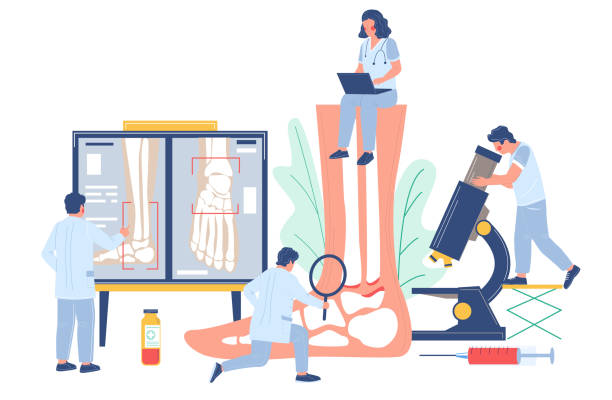Table of Contents
Things You Need To Know About Charcot Foot
Charcot foot, also known as Charcot arthropathy or Charcot neuroarthropathy, is a serious condition where the bones, joints, and soft tissues of the foot or ankle gradually weaken. This is caused by progressive nerve degeneration in the lower legs and feet. Once you lose the feeling in these parts, you might not be able to detect pain, broken bones, or other injuries in the affected foot.
As the disorder advances, the foot changes its shape while the bones and joints may eventually break and collapse. See a foot specialist immediately if you think you might have Charcot foot. That is because this condition can lead to serious complications such as extreme deformity, disability, and amputation. Continue reading to learn more.
Causes
Charcot arthropathy affects people with nerve damage in the feet and ankle. This is prevalent among diabetic people. However, neurodegeneration can also be caused by alcoholism, drug abuse, stroke, infection, viruses, Parkinson’s disease, spinal cord disease or injury, and syphilis, among others.
If you have a sprain, a broken bone, or a sore that is left untreated because you lack or lose the sensation in your foot or ankle, you can develop Charcot arthropathy. Continuous use of the affected foot can cause repetitive microtrauma that can worsen over time.
Signs and Symptoms
Common symptoms of Charcot neuroarthropathy include:
- Redness
- Swelling
- Feels warm to the touch
- Pain or soreness
- Change in foot shape
If you start noticing these signs, prevent further complications by taking the weight off the affected foot immediately. Because other foot problems can bring the same symptoms as Charcot arthropathy, you need to visit a reputable podiatrist who can provide the proper diagnosis.
Treatment
If you are diagnosed with Charcot foot, you need to be treated immediately. There are two kinds of treatments available for this condition: surgical and non-surgical. Read on to learn more.
- Nonsurgical Method
During the early stage of this foot disorder, the most critical treatment you can have is offloading. This is the reduction or removal of weight placed on the affected foot to prevent further inflammation and other complications. Nonsurgical treatment of Charcot arthropathy involves:
- Preventing Your Foot From Collapsing
A great way of keeping the foot immobile is putting it in a cast or a brace. You may also need to use crutches, a knee walker, or a wheelchair to avoid putting pressure on the affected foot. That way, the bones can heal properly after a few months.
- Wearing Custom Shoes and Bracing
After the bones have healed, the doctor may recommend you to wear prescription footwear. Shoes with special inserts that fit you properly help relieve sores and prevent developing ulcers or other injuries when you go back to your daily activities. You may also need bracing if you have a major deformity.
- Modifying Activities To Minimize Weightbearing on the Foot
Once you return to your day-to-day habits, your activities need to be modified so that you won’t need to move around or use your feet more than necessary. This is a way of preventing repetitive trauma on the foot.
- Surgical Method
Surgery is necessary if you have a severe case of deformity. Depending on the diagnosis and damage, the foot and ankle surgeon may advise you to have more than one operation to reshape the affected area. That means the joints and bones need to be moved to follow the original form of the foot. Ostectomy or realignment osteotomy and fusion are surgical options the doctor may recommend.
Preventive Measures
Here are ways you can prevent Charcot neuroarthropathy:
- Check your feet, ankles, and toes everyday for symptoms.
- Manage your blood glucose levels, especially if you are a diabetic.
- Keep your blood pressure under control.
- Quit smoking.
- Avoid scenarios where your feet can get injured, such as bumping your foot, or overexerting during exercises.
- Wash your feet daily. Also, wear socks and shoes for protection.
- Visit your foot doctor for regular checkups.
Get in Touch With an Excellent Podiatrist
Charcot arthropathy is a difficult disease to deal with. Now that you’ve gained a better insight into this foot condition, keep a vigilant eye when you start noticing its symptoms. If you are at risk of having this severe disorder or if you suspect that you have it, contact a reliable foot specialist near you.











